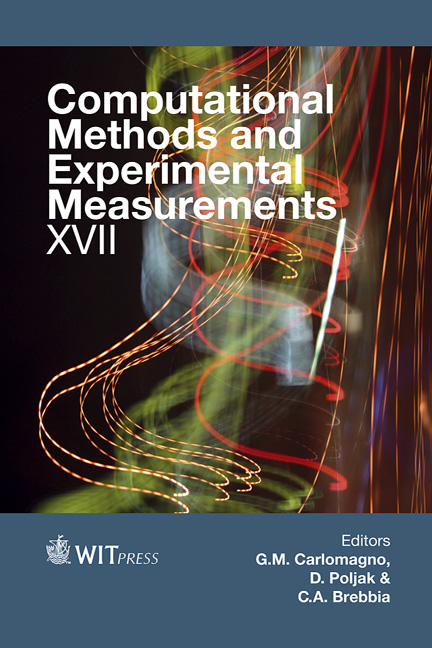Control Of Flow Around A Circular Cylinder Using A Patterned Surface
Price
Free (open access)
Transaction
Volume
59
Pages
12
Page Range
245 - 256
Published
2015
Size
1,184 kb
Paper DOI
10.2495/CMEM150221
Copyright
WIT Press
Author(s)
T. Hojo
Abstract
Controlling the flow around a circular cylinder by the use of patterned surface roughness is investigated. In this study, experimental work to reduce drag coefficient of a circular cylinder was carried out with particular attention to change in the distribution of surface roughness. Drag coefficient of a circular cylinder having discretely patterned surface was compared with uniformly roughened surface. When the circular concave and convex patterns with relative surface roughness of about 1% of the diameter were added discretely to the surface, drag coefficient of a cylinder of the patterned roughness is lower than a cylinder with uniform surface roughness of the same degree, and remains approximately constant beyond the critical Reynolds number. Measurement of the pressure distribution indicated that circular cylinders with a lumped patterned roughness made it possible to reproduce a supercritical state in lower Reynolds number range. It was considered that the lumped patterned roughness changed the flow around the circular cylinder, causing a combining of the laminar separation and the turbulent separation. The drag force characteristics of the circular cylinders were well explained by the results of the pressure distribution measurement. In conclusion, it was found that density and arrangement of lumped roughness was the key factors in controlling the drag characteristics of a circular cylinder. It seems to be possible to adjust those two factors to optimize the drag coefficient–Reynolds number relationship. Methods in this study to control the drag characteristics in the vicinity of the critical Reynolds number can be applied to all of cylindrical structures in various fields.
Keywords
circular cylinder, surface roughness, drag coefficient, Reynolds number, pressure distribution





